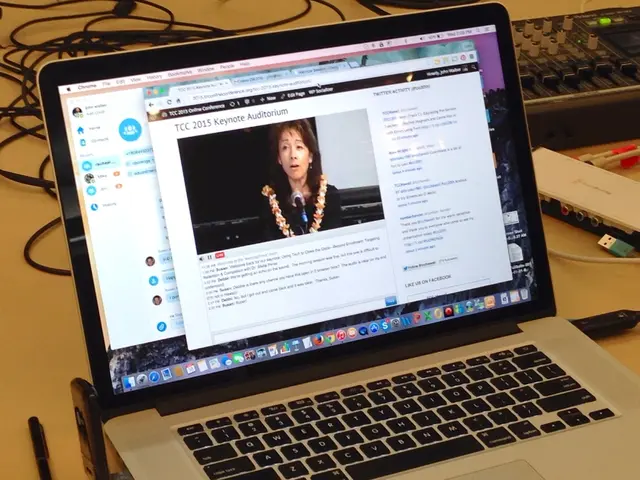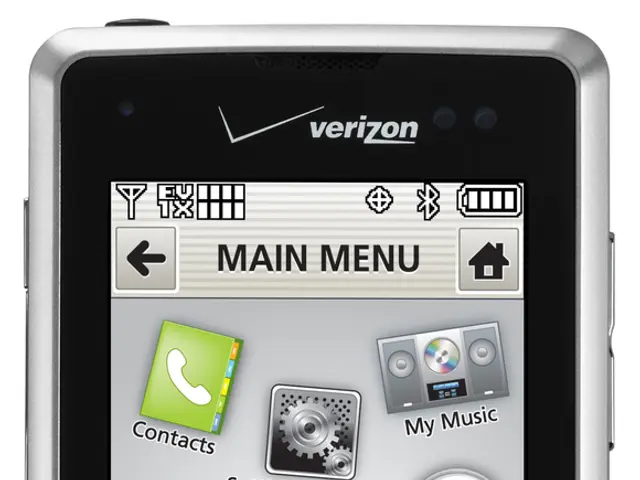Guide on Employing Socks5 on an iPhone: Counter Hackers in 5 Effortless Steps
Seeking an added layer of security for your iPhone's internet data? SOCKS5 proxy might be your answer. This digital intermediary acts as a clandestine tunnel for your online traffic, safeguarding your personal information from unwanted intrusions. Here's a step-by-step guide to shield your online activities with SOCKS5 on an iPhone.
SOCKS5 Proxy Explained
SOCKS5 functions as a security intermediary for iPhone users by routing internet traffic through diverse servers, thereby concealing IP addresses. It distinguishes itself from other proxy types due to its ability to manage multiple internet protocols seamlessly, such as HTTP and FTP.
With SOCKS5, your iPhone's internet data travels through this intermediary server, disguising your actual IP address and enhancing your online privacy. SOCKS5 offers robust protection for iPhone users who yearn for extra security and liberty online, as it supports both TCP and UDP traffic types, ensuring flexibility across various apps and services.
By creating a tunnel between your iPhone and the internet, SOCKS5 keeps your data undetected by prying eyes. Countless tech-savvy individuals rely on SOCKS5 to bypass geo-restrictions and safeguard personal data during web browsing, file downloads, and the use of diverse internet protocols.
Setting Up SOCKS5 on iPhone
Configuring SOCKS5 on an iPhone only takes five effortless steps. To defend your online movements, your iPhone requires a valid proxy server address and the correct network settings.
Acquiring a SOCKS5 Proxy Server Address
Setting up a SOCKS5 proxy server address necessitates selecting a reliable proxy provider. The provider equips you with an IP address and port number (usually 1080) for their SOCKS5 server, which establishes a secure conduit for internet traffic.
After testing multiple proxy services, those offering residential proxies with real IP addresses are proven to be the most effective.
Think of a proxy server as a digital bodyguard for your online activities.
A SOCKS5 configuration requires three vital components: the server's IP address, port number, and login credentials. Proxy services typically email these details following registration.
Configuring WiFi Network Settings
Now that you have your SOCKS5 proxy details at hand, let's dive into the iPhone setup process. Your iPhone requires a WiFi connection to make this work, so grab your device and follow these steps:
- Open your iPhone's Settings app.
- Locate the WiFi option at the top of the screen and tap it.
- Find the blue checkmark next to your connected network.
- Tap the small "i" icon next to your WiFi network name to view all the network details.
- Scroll down until you spot "HTTP Proxy" near the bottom of the screen.
- Choose "Configure Proxy." Pick "Manual" for SOCKS5 setup.
- Fill in your proxy server address in the "Server" field. Enter your port number in the "Port" box.
- Provide your login credentials if required.
- Hit the "Save" button in the top-right corner. Your iPhone will now route traffic through your new proxy setup.
- Test your connection by opening Safari and loading any website. Your traffic now flows through the SOCKS5 proxy server.
- Keep your WiFi connection on while using the proxy. Your iPhone only supports proxy connections through WiFi networks, not cellular data.
- Assess your connection speed after setup. Some slowdown is common since your data takes a longer path through the proxy server.
Effective SOCKS5 Use on iPhone
Trusted SOCKS5 apps for iPhone include Shadowrocket, Potatso, and Surge, featuring paid services like Oxylabs at approximately $8/GB. To ensure your SOCKS5 connection is working properly, conduct the following checks:
- Examine your IP addresses online.
- Test geo-restricted websites.
- Run DNS leak tests.
Follow these steps to disable SOCKS5 on your iPhone:
- Open your iPhone's Settings app.
- Locate the WiFi option at the top of the screen and tap it.
- Find your current WiFi network and tap the blue (i) icon next to its name.
- Scroll down until you spot the HTTP Proxy section in the network settings.
- Tap the Configure Proxy option and select 'Off' to disable all proxy settings.
- Hit "Save" in the top-right corner to lock in your changes.
Final Considerations
Opt for trusted apps like Shadowrocket, Potatso, or Surge for SOCKS5 setup on your iPhone. These apps boast robust encrypted communication, keeping your internet traffic secure.
It's best to avoid free proxies, as they often leak data or slow down your connection. Paid services like Oxylabs provide better speeds and security for your iOS device.
Always double-check your proxy details before connecting to ensure a smooth SOCKS5 experience. Your server address, port number, username, and password must match exactly what your provider gave you.
Always test proxies before transmitting critical data through them. Stay updated with your app and keep watch of your data usage to avoid unexpected surprises.
Personal privacy should always be regarded as paramount, so elect proxy servers that do not keep logs of your online activities.
SOCKS5 Proxy, in addition to cybersecurity, is also a valuable resource in data-and-cloud-computing, as it protects iPhone users by routing internet traffic through diverse servers and hiding IP addresses, offering a secure connection for various apps and services.
To reap the benefits of SOCKS5 on an iPhone, users must follow a five-step process that requires a valid proxy server address and the correct network settings. This involves acquiring a SOCKS5 proxy server address from a trusted provider, configuring WiFi network settings on the iPhone, and using trusted apps like Shadowrocket, Potatso, or Surge for a secure connection.







